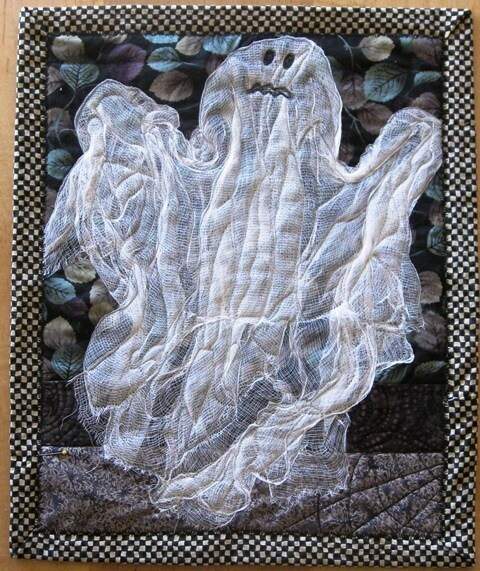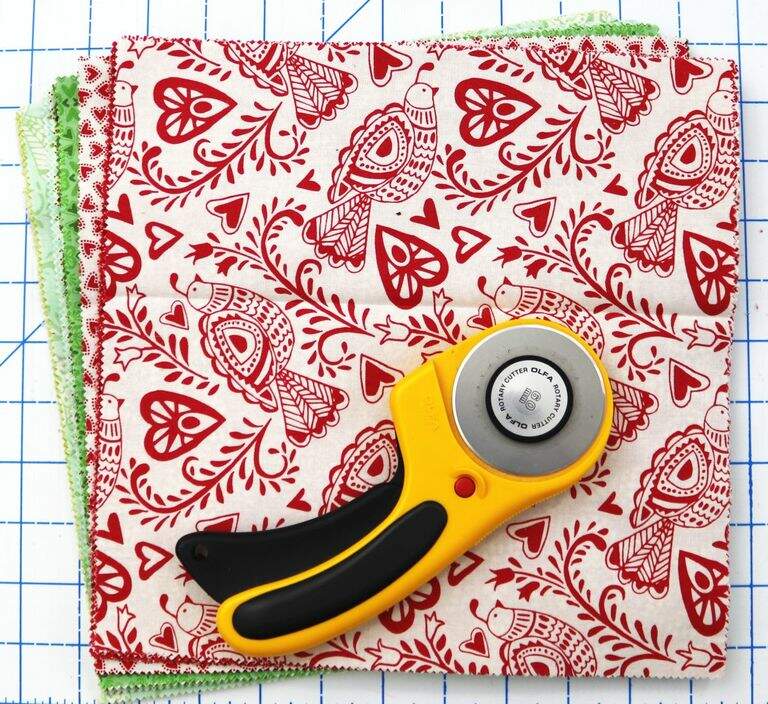Quilt Batting Overview
That all-important middle layer makes a big difference in how easy your quilts are to make, and how comfortable they are to use. Each type of batting offers a different combination of flexibility, durability, warmth, and cost.
This post gives you an overview of the important factors to consider when you choose the batting for your next quilt.
Things Every Quilter Should Know About Batting
Deciding which batting (wadding) to use for the quilt you want to make can feel overwhelming.
There are so many different fibers to choose from! So many different thicknesses! So many sizes! So many prices!
I’ve been quilting for years, and I’m still confused. I see new types of batting just about every time I visit my local quilt store. New cotton blends. Bamboo blends. Wool blends. Fusible. Silk. Corn. (Yes, corn!) Even soy.
A surprising amount of technical know-how goes into the making of a good-quality quilt batting. Understanding these factors will help you choose one that works for you.
Bonded vs. Needle-Punched
The kind of batting you can buy at a store is held together in one of two ways:
- Bonded batting has the fibers bonded together by a glue-like bonding agent. If you don’t like the idea of chemicals in your quilt, avoid bonded battings.
- Needle-punched batting has the fibers mechanically felted together by punching them with lots and lots of needles. Often a thin layer of synthetic material called a “scrim” is needle punched into the natural fibers to give the batting greater stability. Needle-punched battings are firmer and denser than bonded battings. Their density can also make them harder to hand quilt. If you’re hand quilting, you may want to avoid needle-punched batting.
Loft and Warmth
“Loft” refers to a batting’s thickness and resiliency. A lofty batting feels puffy and springs right back up when you poke it. Loft and warmth usually go together, because lofty batting is filled with little air pockets that hold in your body’s heat. Wool and polyester batting are the traditional favorites for both loft and warmth.
Loftiness also makes batting harder to baste and stitch. If you want to show off detailed quilting, a less lofty batting like cotton, bamboo, or thin wool is the way to go.
Cost and Quality
The cheapest batting is made from petroleum-based fibers and manufactured using the cheapest possible processes. Cheap batting probably doesn’t include the bonding agents or needle-punching processing that hold more expensive batting together.
As a result, cheap batting tends to beard, or break down into little tufts that poke out through the quilt fabric. This can happen right while you are stitching the quilt or afterwards, when you wash it. A quilt made with cheap batting may also get stiffer as you add more quilting.
I don’t know about you, but I put so many hours of work into my quilts that I only want to use batting that lets me have fun while I quilt and wears well when the quilt gets used. Cheap batting is too costly in time and quality for me.
The most expensive batting is made from premium natural fibers like alpaca or silk, which are outstandingly light and warm but cost a lot more than standard batting, and also require special care. Silk batting is used to make quilted clothing. Alpaca is good for wool lovers who may have allergies. Read about my experience with alpaca batting here.
For most quilts, I prefer something in the middle: a batting made by a reputable manufacturer like Hobbs, Fairfield, Mountain Mist, or The Warm Company. All of these companies make battings from a variety of different fibers for different types of quilts.
Stitching Distance
This term refers to how far apart you can place your lines of stitches without having the batting shift or lump up when the quilt is used and washed. Look on any batting package and you will see a recommended stitching distance supplied by the manufacturer (who ought to know, I guess.)
If you want to do the kind of dense quilting that wows the audience at quilt shows, consider a thin wool or cotton batting. They show off your stitches beautifully. Wool also resists creasing, so it handles
Ease of Washing
Some quilts are made to be hung on the wall and rarely (or never) washed. But for quilts that will see a lot of use, it’s important to choose a batting that stands up well to washing. Any batting from a reputable manufacturer that calls itself washable probably is. I’ve had good experiences washing cotton and bamboo batting. Now I’m dying to try the [amazon_link id=”B0043BFMMS” target=”_blank” container=”” container_class=”” ]washable wool battings from Hobbs[/amazon_link].
If the manufacturer instructs you to prewash the batting, you should definitely do it. There’s nothing worse than having a quilt shrink in ways you weren’t expecting AFTER you finish all that beautiful work! And some fibers shrink quite a bit the first time they are washed. Look on the package to see how much you can expect a particular product to shrink.
Eco Friendliness
One of the most encouraging changes in quilting today is the rise of organic alternatives to conventional fabrics and batting. I started using bamboo batting because I didn’t like the idea of all the pesticides and oil-based fertilizers used to grow cotton. Wool is also appealing because it can be raised organically and it’s a renewable product that doesn’t harm the sheep. Now you can [amazon_link id=”B002BJDLXG” target=”_blank” container=”” container_class=”” ]buy organic cotton batting[/amazon_link] too.
Another organic blend I have on my list to try is [amazon_link id=”B004I34ORK” target=”_blank” container=”” container_class=”” ]soy batting[/amazon_link].
Questions to Ask Yourself Before You Choose Batting for Your Next Quilt
- How will this quilt be used? If you plan to hang it on the wall and hardly ever wash it, a thin batting like cotton, bamboo, or a thin wool will work better than a lofty one. For garments, professionals prefer silk. It’s expensive but it’s light and flexible and warm for its weight.
- How warm do you want it be? For a very warm quilt, consider wool or a lofty polyester. I also use polyester fleece instead of batting. For a hot-climate quilt, you may want to dispense with normal batting and use a layer of flannel as the middle layer. (Shrink it at least once before you quilt, though! Flannel really shrinks.)
- What kind of quilting do you plan to do? If you want to show off your fancy quilting, use cotton or a thin wool, which show off dense stitches beautifully. Loftier batting demands simpler stitching or even tying to fix the quilt layers together. I have heard (although I don’t know from my own experience) that bamboo batting tends to beard when hand quilted.
The only way to really find out what you like is to experiment. Try several different types of batting until you find one or two you really like. Ask your quilting friends which brands they like. Ask the people who have quilts you’ve made for feedback on how well the batting wears.
If you’re an experienced quilter, now is a good time to check out some of the new options and see how you like them. I’m planning to try out washable wool and some of the new bamboo blends.



